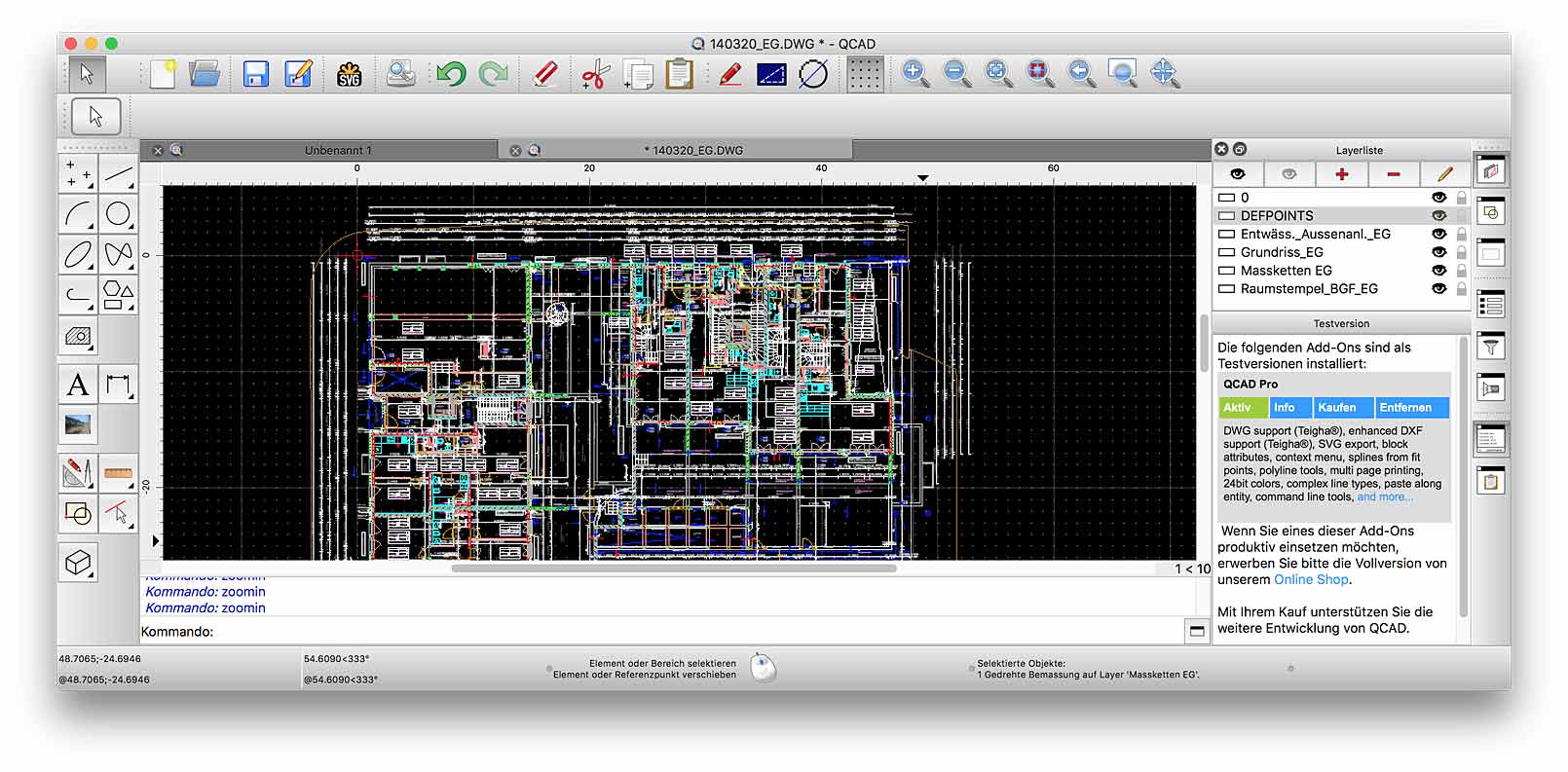

Maybe this is too much of changes needed inside the layer list - so something like a separate layer export dialogue would make sense.

select the three layers that need to be in the new document, then right click and save as new file). Also a multiple selection would be handy if more that one layer should end up in the new file. inside the layer list an entry in the right click menue like “save as new file”). But very often a “single click” export method would also help a lot. Sometimes I have up to 100 layers I need to export like this, so an automatic export for all would be time saving too. It would be nice to have some sort of “partial” (for my lack of a better word) radial/diametric dimensions where the dimension length can be adjusted.Ĭonsidering that this can be done with Leader, maybe a better (more generic) solution would be for Leader type dimensions to have options so they could automatically generate labels for various dimensions of a selected entity – sort of like having the Prefix/Tolerance/Scale options the other dimensions have, and have some additional fields there for selected entity and maybe dimension type (for example, radial or diametric for an arc-type entity). There is a perfectly good, albeit really shallow arc, making the radius somewhere in the vicinity of 600 millimeters, and the radial dimension being drawn accordingly.Ĭonsidering the other dimensions of the part, this is completely unusable, even to work with, really, but definitely so when it needs to be put on paper. This is kind of related to FS#952, or rather a superset of it.Ĭonsider the situation in the attached image. Le nom de la pièce pourrais être le nom du fichier, la date du dernier enregistrement après c’est le reste des infos qui serait à ajouter je ne sais comment (matière, indice, dessinateur. La mise à l’échelle pourrais être automatique pour que ca rentre dans le A4 et donc l’échelle s’afficherai aussi en automatique. Le cartouche s’affiche automatiquement lors de son impression. Ne serait il pas possible de créer une sorte de template lors de l’impression ? The name of the play could be the file name, date last saved after it the rest of the information that would be to add somehow (material index, designer. The scaling could be automatic so that it goes in the A4 and therefore also will post the scale automatically. The cartridge will automatically appear when printed. There is a lot more to discover about it and as you do, you quickly see that it is a decent and reliable tool.Would not it be possible to create a kind of template for printing? The above mentioned only presents a small percentage of what makes up QCAD.
#Qcad software pdf
The application enables you to save to DWG, DFX, DGN, BMP, SVG and PDF which cover almost all the widely used formats used to transport and print blueprints. The designs that you create with QCAD might be required in a lot of different projects and for this reason exporting to different file formats is supported. Aware of this, QCAD doesn’t cut any corners as it allows grid, entity, perpendicular, middle, reference, distance, intersection, coordinate and many more snapping possibilities.

It offers you improved precision and greatly increases your productivity. One of the most important and helpful features of any CAD application is its ability to snap to objects while drawing. Since you can’t be an engineer and not mess-up a design now and them, QCAD allows you to work with multiple layers and provides tools that allow you to trim, stretch, round, divide and break elements so you can easily correct a mistake. You get to use point, line, arc, circle, spline and polyline for drawing along with aligned, horizontal, ordinate, radial, diametric and angular measuring tools.

Like any respectable CAD software, this one also offers a wide array of tools which you can use to create your designs. An aspect that shouldn’t be overlooked is that having the application as an open source release means that you can put some development skills to use and create custom features for QCAD or enhance existing ones. The panels can be repositioned and grouped in such a way that eases access and improves your workflow. In the traditional style of computer aided drafting software, all the tools that you need to create your schematics are placed in panels all around the actual drawing space. QCAD displays a graphic user interface which is more than comprehensive. QCAD is an open source CAD application created to offer you the tools needed to draw two dimensional building blueprints, schematics for mechanical parts, complex diagrams and much more.


 0 kommentar(er)
0 kommentar(er)
